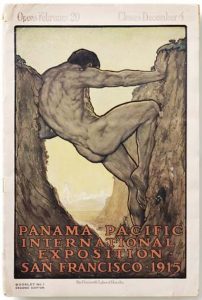Travel Quiz - Beautiful Structures Built NOT to Last
Travel Quiz - Beautiful Structures Built NOT to Last

2 of these 3 buildings were originally built as “temporary buildings” to be later torn down? Which one was permanent?


THE ANSWER: The top building was built to last. It is the Hall of States building at Fair Park in Dallas, circa 1936. To learn about the other buildings keep reading.
Consider today’s entry a travel blog. One of my encouragements to readers in my book, is that we must educate ourselves on architecture and a great way to do that is to travel. Here are 3 great buildings to visit, all here in the US of A. The building at the top is in Dallas, the replica of the Parthenon is in Nashville, built-in 1896, and finally the Palace of Arts in San Francisco built-in 1915.
As strange as it may seem to us today. The Parthenon and the Palace of Arts were NOT built to last but rather more like movie sets. If you’ve read Devil in the White City by Eric Larson, about the World’s Fair in Chicago, you are familiar with this type of “temporary” construction, and the work that went into these grand expositions. These events were immensely popular and constructed to host and entertain the world for a short time.
On Thursday, the 22nd, I’ll be speaking to the Dallas Historical Society and Preservation Dallas about, The Timeless House. It will be held at Hall of State building on the Fair Park Campus in Dallas. Fair park was the sight of the Texas Centennial in 1936 and, as was typical for state celebrations and worlds fairs, a great fair ground was constructed with a wonderful collection of buildings.
This picture shows the interior of the Hall. I learned a great deal about Fair Park from Marcel Quimby, a Dallas architect who gave a talk on the wonderful Art Deco architecture.

As you can see in the post card below, the fair included a race track, a stadium (the Cotton Bowl) and exhibit space, it was highlighted by the Hall at the end of a grand Esplanade.


In 1896, Tennessee was celebrating their statehood centennial and the center piece was a replica of the Parthenon, the famous Greek temple in Athens. I visited Nashville and saw this wonderful building last year. For years, I had read and studied about the Parthenon in Athens but never having seen it in real life, I was fascinated to see its replica up close. It helped me gain a sense for the scale, its sculpture and decoration.


Lastly, in 1915, San Francisco won the competition over New Orleans and DC to host the first world’s fair of the new century. Aching to show the world they had recovered from the 1906 fire and earthquake. San Francisco constructed a wonderful collection of buildings highlighted by the Palace of Arts. This world’s fair was called the Panama Pacific exposition to celebrate the newly opened Panama canal.

The wonderful Palace of Arts can still be seen if your driving north towards the Golden Gate Bridge. It sits like beacon of beauty near the water. It has always enchanted me and my friend Dan Miller sent me some pictures from his visit, see below.


Looking at the postcard view of the Panama Pacific expo below it is clear to see that we used to celebrate life differently. These buildings are fascinating reminders of how we used to think. They are exuberant fantasies that represented possibilities and hope for the future. They were attempts to show off and also pay homage to a meaningful building heritage and tradition. As you travel and learn the story and narrative about historic buildings, I hope it helps you find your voice and your story as you seek to build your own Timeless Home. If nothing else, now you know why they stand, and hopefully it can make your trip more enjoyable.
By the way, the Nashville Parthenon and the San Francisco Palace of Arts are still standing due to preservation and rebuilding efforts. Both buildings were rebuilt out of long-lasting more durable products years later. It seems people saw their natural and significant beauty and realized that they improved their lives. The great architecture elevated their tastes and desires. Thus these temporary buildings are now thankfully permanent.
-B

